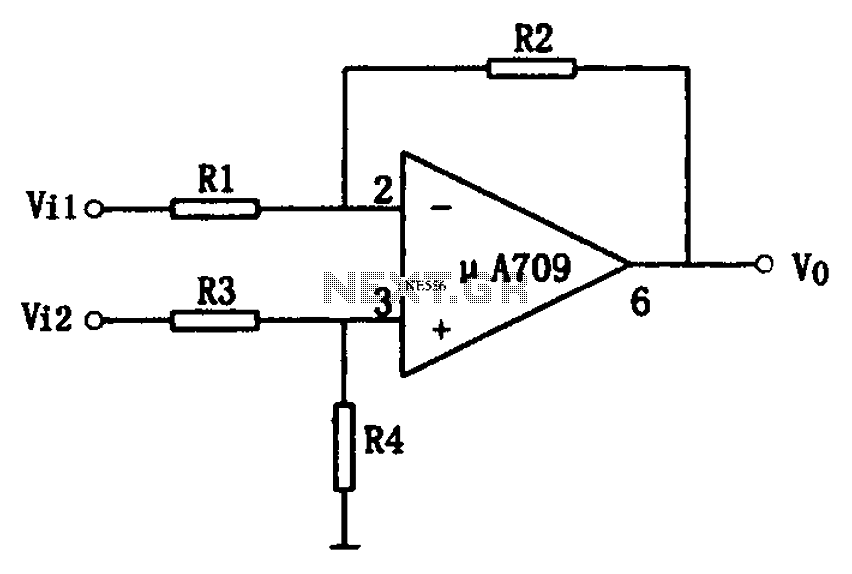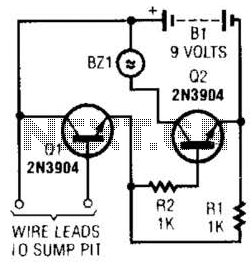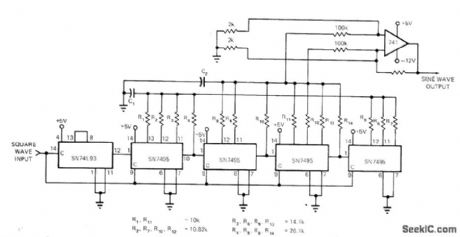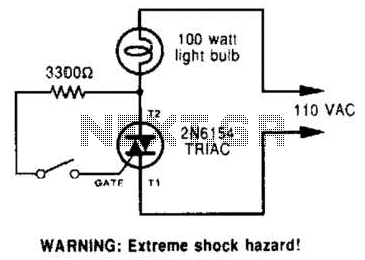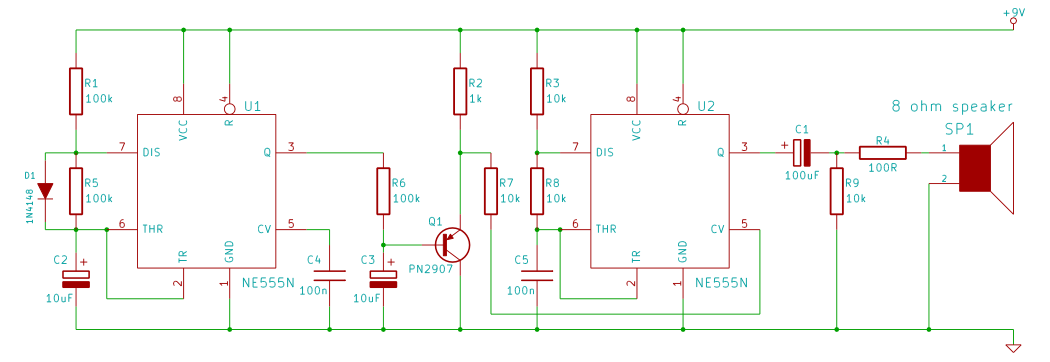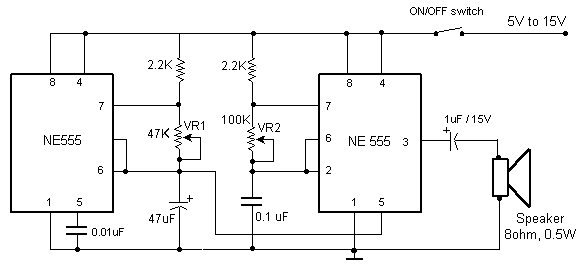
Simple Pulse Generator by IC 555 Timer
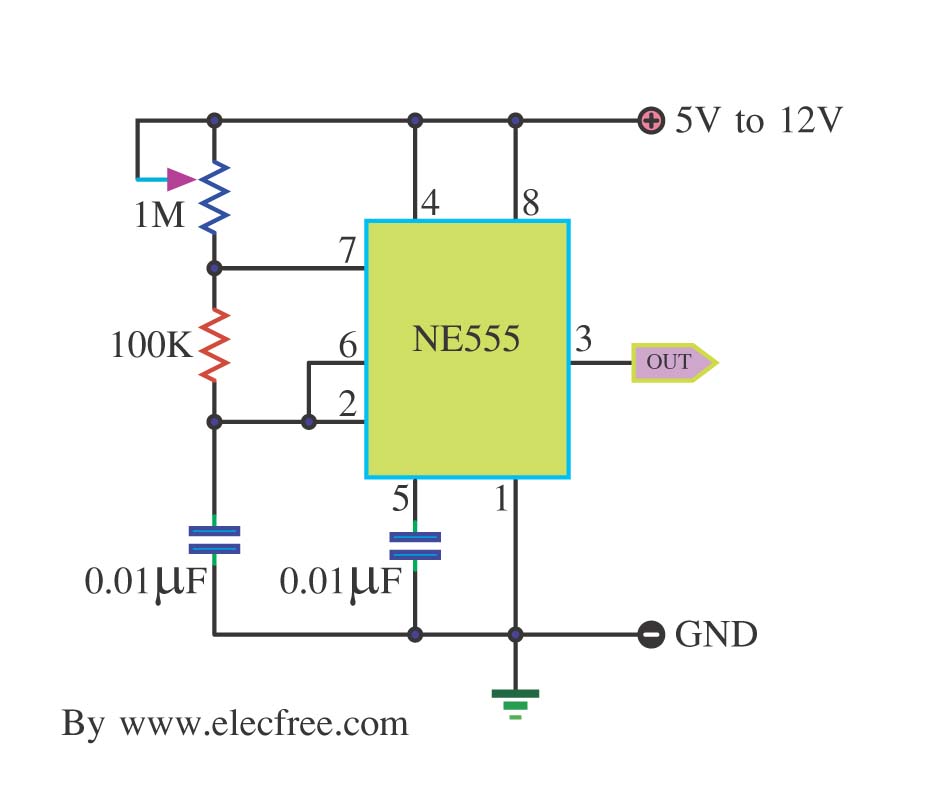
This is a simple pulse generator circuit or standard astable oscillator circuit for the IC 555 timer, NE555N IC.
The astable oscillator circuit utilizing the NE555 timer IC serves as a versatile pulse generator, producing a continuous square wave output. This circuit is commonly employed in applications such as clock pulses, tone generation, and LED flashers. The NE555 timer operates in the astable mode, which means it continuously switches between its high and low output states without requiring any external triggering.
In this configuration, the circuit consists of the NE555 timer, two resistors (R1 and R2), and a capacitor (C1). The resistors define the charge and discharge times of the timing capacitor, ultimately determining the frequency and duty cycle of the output signal. The output frequency (f) can be calculated using the formula:
f = 1.44 / ((R1 + 2 * R2) * C1)
Where:
- R1 is the resistor connected between VCC and the discharge pin (Pin 7).
- R2 is the resistor connected between the discharge pin (Pin 7) and the threshold pin (Pin 6) as well as the trigger pin (Pin 2).
- C1 is the capacitor connected between the threshold pin (Pin 6) and ground.
The duty cycle (D) of the output signal can be calculated using the formula:
D = (R2 / (R1 + 2 * R2)) * 100%
This provides insight into the proportion of time the output signal remains high versus low.
To construct the circuit, connect the NE555 timer according to the standard astable configuration. Ensure that the power supply voltage (VCC) is within the operational range specified in the NE555 datasheet, typically between 4.5V and 15V. The output can be taken from Pin 3, which provides a square wave signal suitable for driving various loads or interfacing with other digital circuits.
In summary, the NE555 timer configured as an astable oscillator is an essential building block in electronics, capable of generating precise timing signals for a wide range of applications. Proper selection of resistor and capacitor values allows for customization of the output frequency and duty cycle to meet specific needs.This is a simple pulse generator circuit or standard astable oscillator circuit for IC 555 timer,NE555N IC. Use for.. 🔗 External reference
The astable oscillator circuit utilizing the NE555 timer IC serves as a versatile pulse generator, producing a continuous square wave output. This circuit is commonly employed in applications such as clock pulses, tone generation, and LED flashers. The NE555 timer operates in the astable mode, which means it continuously switches between its high and low output states without requiring any external triggering.
In this configuration, the circuit consists of the NE555 timer, two resistors (R1 and R2), and a capacitor (C1). The resistors define the charge and discharge times of the timing capacitor, ultimately determining the frequency and duty cycle of the output signal. The output frequency (f) can be calculated using the formula:
f = 1.44 / ((R1 + 2 * R2) * C1)
Where:
- R1 is the resistor connected between VCC and the discharge pin (Pin 7).
- R2 is the resistor connected between the discharge pin (Pin 7) and the threshold pin (Pin 6) as well as the trigger pin (Pin 2).
- C1 is the capacitor connected between the threshold pin (Pin 6) and ground.
The duty cycle (D) of the output signal can be calculated using the formula:
D = (R2 / (R1 + 2 * R2)) * 100%
This provides insight into the proportion of time the output signal remains high versus low.
To construct the circuit, connect the NE555 timer according to the standard astable configuration. Ensure that the power supply voltage (VCC) is within the operational range specified in the NE555 datasheet, typically between 4.5V and 15V. The output can be taken from Pin 3, which provides a square wave signal suitable for driving various loads or interfacing with other digital circuits.
In summary, the NE555 timer configured as an astable oscillator is an essential building block in electronics, capable of generating precise timing signals for a wide range of applications. Proper selection of resistor and capacitor values allows for customization of the output frequency and duty cycle to meet specific needs.This is a simple pulse generator circuit or standard astable oscillator circuit for IC 555 timer,NE555N IC. Use for.. 🔗 External reference
